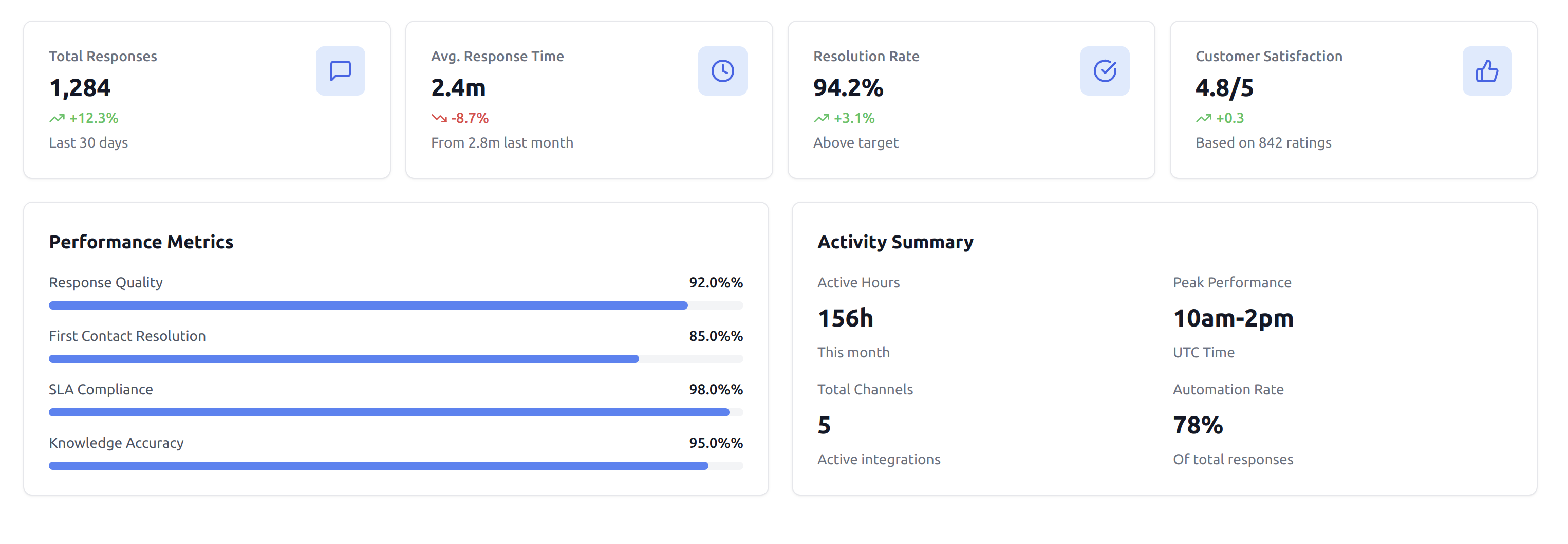StateSet ResponseCX AI Agent Framework and SDK
The StateSet ResponseCX AI Agent Framework is a powerful suite of tools and libraries designed to facilitate the development and deployment of sophisticated AI agents. This framework provides a robust foundation for building intelligent, autonomous agents that can handle complex tasks.Framework Overview
The ResponseCX AI Agent Framework integrates several key components to create a complete system for building intelligent agents.Key Components:
- Application: The user-facing interface or system interacting with the AI agent.
- Embedding Model: Transforms text queries into vector embeddings for semantic search.
- Metadata Filter: Filters vector results based on specified metadata.
- API: Provides the interface for interacting with the Vector Database.
- Vector Database (VDB): Stores and retrieves vector embeddings, allowing for fast similarity searches.
- Context: Provides relevant information to the LLM for generating responses.
- LLM (Large Language Model): Generates responses based on the context and query.
- LLM Models: (GPT4o, Claude, Llama3) - The specific large language models that you can choose from.
- Knowledge Base: (Memories, Rules, Attributes, Examples) - Stores relevant information about the agent’s configuration.
- Workflows: (Actions 1-3) - Define the sequence of operations that an agent can perform.
- Agent: The core entity that leverages the LLM, Knowledge Base and Workflows.
- Scheduler: Manages the timing and triggering of scheduled messages.
- Macros/FAQs: Predefined sets of information and responses.
SDK Overview
The ResponseCX AI Agent SDK is built on top of the StateSet Cloud platform infrastructure, which includes:- A deterministic workflow engine
- An event-driven architecture
- A state-of-the-art AI model
Modules
The SDK is organized around the following modules:- Agents: Configure agent-specific settings and behaviors.
- Knowledge: Store and manage the agent’s knowledge base.
- Attributes: Define properties and characteristics of the agent.
- Rules: Establish logic and conditions for the agent’s actions.
- Functions: Add custom code and capabilities to the agent.
- Memories: Store and retrieve past interactions to maintain context.
- Examples: Provide training data for the agent to learn from.
- Schedules: Set up recurring tasks and notifications for the agent.
- Settings: Configure general settings and parameters for the agent.
AI Agents
Robert is a customer experience agent built on the ResponseCX Platform.
Robert - AI CX Agent

Robert - CX Stats
Interaction Overview
Here’s an overview of how the different components interact:- The Application sends a Query to the Embedding Model.
- The Embedding Model generates a vector embedding of the query.
- The Metadata Filter is used to filter the results.
- The filtered vector embedding is sent to the API for retrieval of information from the Vector Database.
- The API retrieves relevant vectors and corresponding data.
- The retrieved data is passed as a Context to the LLM.
- The LLM uses the Context and Knowledge to generate a response, which is then streamed back to the Application.
- The Agent triggers predefined Workflows, which are then controlled by the Scheduler.